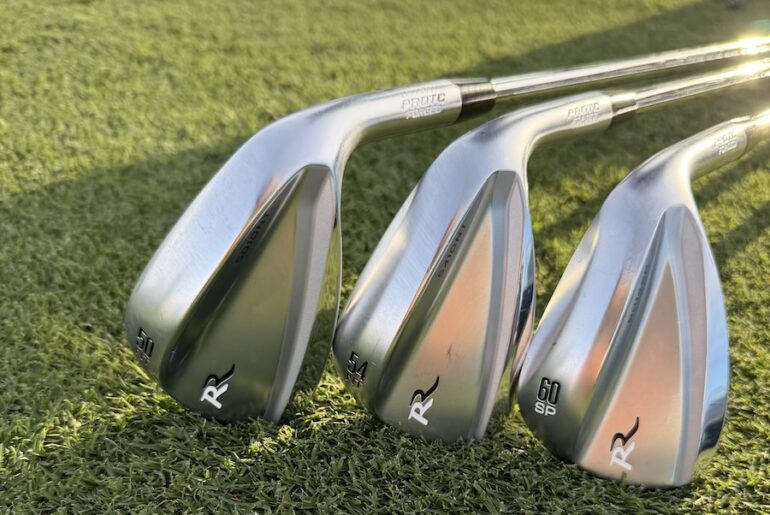 Executive Summary
Executive Summary
The golf club market is poised for steady growth in the coming years. With an increasing number of golf enthusiasts and the continued development of innovative golf equipment, the market is set to expand from a valuation of US$4.23 billion in 2024 to US$5.27 billion by 2031. This represents a CAGR of 3.2% from 2024 to 2031. As the sport of golf gains traction globally, advancements in club technology and design are expected to further drive the market’s growth. This report delves into the factors influencing the market, key players, growth barriers, and trends shaping its future.
𝐆𝐞𝐭 𝐒𝐚𝐦𝐩𝐥𝐞 𝐂𝐨𝐩𝐲 𝐏𝐃𝐅- https://www.persistencemarketresearch.com/samples/31377
(Use Corporate Mail Id for Quick Response )
Market Overview
The golf club market is driven by a diverse range of factors, including the increasing participation in golf, technological advancements in golf equipment, and rising interest in golf as both a recreational and competitive sport. The steady growth reflects broader trends in the sports equipment market, where consumer interest in personalized products and technologically advanced items is on the rise. With an increasing number of amateur and professional golfers, the market has seen a growing need for innovation in golf club design, materials, and performance.
Key Growth Determinants
Several factors contribute to the growing demand for golf clubs:
Growing Popularity of Golf: The sport’s expansion in both mature and emerging markets is fostering greater demand for golf equipment. Countries like the US, Japan, and South Korea remain dominant players, while China, India, and other emerging markets are showing potential for future growth.
Technological Advancements: New technologies in materials and design are helping manufacturers create lighter, more durable, and higher-performing golf clubs. Customization options have also become a significant selling point for consumers, allowing them to personalize their golf equipment to suit individual preferences.
Golf’s Perceived Health Benefits: Golf has grown in popularity due to its low-impact, outdoor nature, which aligns with increasing consumer interest in health and fitness activities. This shift toward health-conscious activities is helping to bring new players into the sport, further stimulating demand for golf clubs.
Rising Disposable Income: The increasing spending power of consumers, especially in developing economies, is another key factor behind the rise in golf club sales. Golf is often considered a luxury sport, and higher disposable income allows a wider group of individuals to purchase premium golfing equipment.
Major Growth Barriers
Despite the positive growth outlook, several factors could hinder the golf club market’s expansion:
High Initial Investment: Golf clubs, especially high-end, custom-fit models, require significant investment. This can be a barrier for new golfers who are still determining if the sport is a long-term pursuit.
Economic Uncertainty: Economic downturns can affect consumer spending on luxury items like golf equipment. A slowdown in the global economy may cause a reduction in discretionary spending, which could affect demand for premium golf clubs.
Saturation in Mature Markets: In regions where golf has been popular for decades, such as North America and Europe, the market may face saturation. In these regions, demand for golf clubs might decline as a result of the aging population and fewer new players entering the sport.
Environmental Concerns: There is increasing pressure for companies to adopt more sustainable practices. The production of golf clubs often involves materials that are not easily recyclable, which may face scrutiny from environmentally-conscious consumers and regulatory bodies.
Key Trends and Opportunities
Several trends are shaping the golf club market and providing new opportunities for growth:
Customization and Personalization: Manufacturers are offering more customization options, including adjustable features like shaft length and head weight. This trend is making golf clubs more accessible to individuals with different playing styles and needs.
Rise of Online Sales: The growing trend of e-commerce has expanded access to golf clubs for consumers who may not have had easy access to physical retail outlets. Many brands now offer online customization tools and direct-to-consumer sales platforms.
Smart Golf Clubs: The integration of technology into golf clubs is an exciting development. Smart golf clubs equipped with sensors that track performance metrics such as swing speed, angle, and ball trajectory are gaining popularity. These innovations provide real-time feedback to help golfers improve their game.
Sustainability Initiatives: As sustainability becomes more important to consumers, companies that invest in eco-friendly manufacturing processes and sustainable materials are likely to see a competitive edge in the market.
Growth in Women’s Golf: The growing participation of women in golf is contributing to an expanding market segment. Manufacturers are increasingly designing golf clubs specifically tailored to female golfers, offering products that provide a more comfortable fit and improved performance.
Regional Market Insights
The global golf club market is geographically diverse, with different regions exhibiting varying growth trends:
North America: Dominates the market due to the large number of golf courses, high golf participation rates, and the presence of several prominent golf club manufacturers. The US remains the largest market for golf clubs globally.
Asia Pacific: The APAC region is expected to experience the highest growth rate. The increasing interest in golf in countries like China, India, and Japan presents significant opportunities for manufacturers.
Europe: Golf remains highly popular in several European countries, particularly the UK, Germany, and France. However, market growth in Europe may slow due to maturity in key markets.
Latin America: Though relatively smaller, the Latin American market shows promise, driven by the sport’s rising popularity in Brazil and Argentina.
Competitive Landscape
Several key players dominate the golf club market, including well-established brands such as:
Callaway Golf
TaylorMade Golf
Titleist
Cobra Golf
Ping
Srixon
Wilson Sporting Goods
These companies are focusing on product innovation, sustainability, and customizations to differentiate themselves in a competitive marketplace.
Golf Club Market Segmentation
By Product Type
Fairways
Irons
Wedges
Putters
By Distribution Channel
Direct
Indirect
By Region
North America
Latin America
Europe
East Asia
South Asia
Oceania
The Middle East Africa
Conclusion
The golf club market is positioned for moderate growth over the forecast period, with key factors such as technological advancements, rising participation in golf, and increased consumer interest in customized and high-performance golf clubs driving demand. While challenges such as economic uncertainty and market saturation in mature regions remain, the growing popularity of golf in emerging markets presents significant growth opportunities. Companies that focus on innovation and sustainability will be best positioned to capture market share and meet the evolving needs of golfers worldwide.
About Persistence Market Research:
At Persistence Market Research, we specialize in creating research studies that serve as strategic tools for driving business growth. Established as a proprietary firm in 2012, we have evolved into a registered company in England and Wales in 2023 under the name Persistence Research & Consultancy Services Ltd. With a solid foundation, we have completed over 3600 custom and syndicate market research projects, and delivered more than 2700 projects for other leading market research companies’ clients.
Our approach combines traditional market research methods with modern tools to offer comprehensive research solutions. With a decade of experience, we pride ourselves on deriving actionable insights from data to help businesses stay ahead of the competition. Our client base spans multinational corporations, leading consulting firms, investment funds, and government departments. A significant portion of our sales comes from repeat clients, a testament to the value and trust we’ve built over the years.
Contact Us:
Persistence Market Research
G04 Golden Mile House, Clayponds Lane
Brentford, London, TW8 0GU UK
USA Phone: +1 646-878-6329
UK Phone: +44 203-837-5656
Email: sales@persistencemarketresearch.com
Web: https://www.persistencemarketresearch.com
This release was published on openPR.






